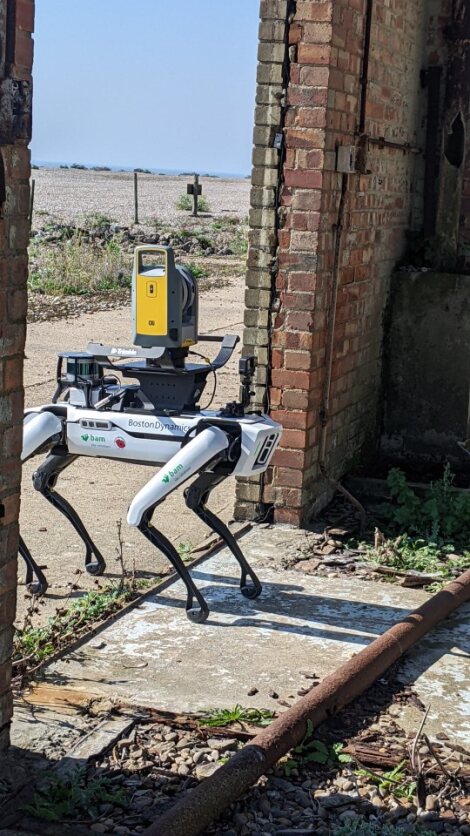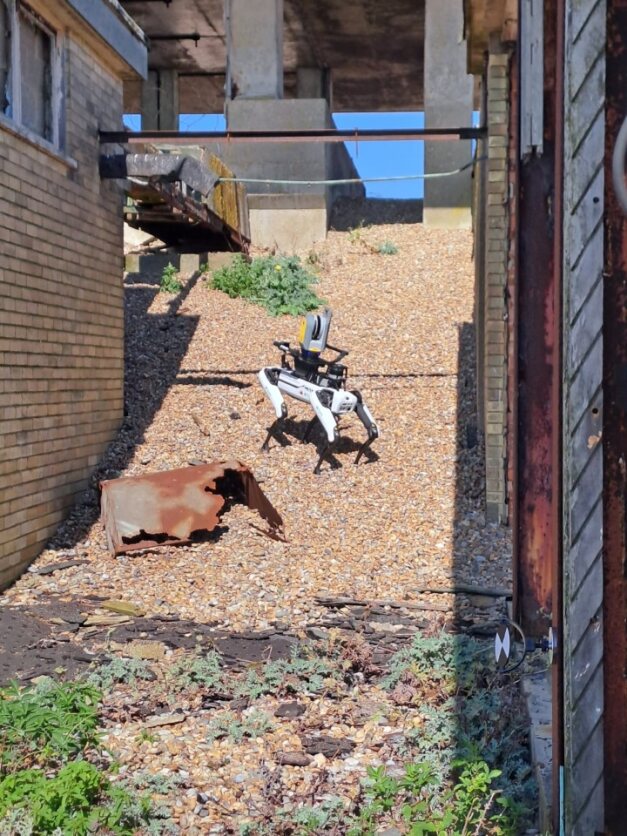
Vanessa Feltz 3pm - 6pm
8 September 2023, 07:54

The artificial canine, with a camera mounted to the top and four hinged legs, is controlled remotely.
A robotic dog called Spot was brought into survey two former Cold War weapons testing facilities, which are unsafe for humans to enter due to decaying concrete.
The National Trust said bringing the tech to Orford Ness in Suffolk to conduct a first measured survey of the historic structures was “a key part of our commitment to ongoing research at our places”.
The remote shingle spit was used as a military test site during both world wars and into the nuclear age, before the Ministry of Defence sold it to the conservation charity in 1993.
The robotic dog, with a camera mounted to the top and four hinged legs, is controlled remotely and from a safe distance to explore spaces where it is unsafe for humans to go.
It was used, alongside drones, to survey two laboratories known as pagodas or Labs 4 and 5 at Orford Ness.
Both are classified as scheduled monuments.

They were constructed in 1960 to carry out environmental tests on the atomic bomb, mimicking the rigours to which a weapon might be subjected before detonation, including vibration, extremes of temperature, shocks and G forces.
Although no nuclear material was involved, a test failure could still have resulted in a catastrophic explosion.
For this reason, the labs were specially designed and constructed with a shingle top which would absorb and dissipate if an explosion occurred.
Glen Pearce, operations manager at the National Trust’s Orford Ness, said: “This is a really exciting opportunity for us to see inside labs four and five, the ‘pagodas’.
“The buildings have always had a certain mystery about them.
“When they were built and in use during the Cold War, they were shrouded in secrecy, and after they were decommissioned, they fell into disrepair.

“Nobody has been able to go inside for several years due to safety reasons.
“This is the first time the National Trust has employed this kind of technology and it’s a key part of our commitment to ongoing research at our places.
“It could change the way we, and our visitors, engage with the structures at Orford Ness as well as other scheduled monuments and buildings deemed unsafe to enter.”
No measured surveys have been completed of the buildings before, the conservation charity said.
National Trust archaeologist Angus Wainwright said: “Historic England’s research into the buildings made us realise how significant they are, on a national and international scale.
“These are some of the few Cold War buildings that are on this monumental scale and visitable by the public.

“The buildings used to be quite safe so we could go in and out as much as we liked, but now they are getting more risky as the concrete decays.
“That’s why we are doing this survey in this remote way, without anyone going into the buildings.
“It’s all very experimental, to see if it’s possible to do a really detailed building survey with no human operator in the building.”
The structures are part of the National Trust’s curated decay policy and have been left to nature, with their roofs becoming nesting sites for lesser black-backed gulls, which are on the UK’s amber conservation list.
Colin Evison, innovation technical lead at BAM, said it was a “fantastic opportunity to put into action our agile mobile robot Spot”.
He said the survey would provide a “comprehensive and valuable record of this historic environment for future generations”.